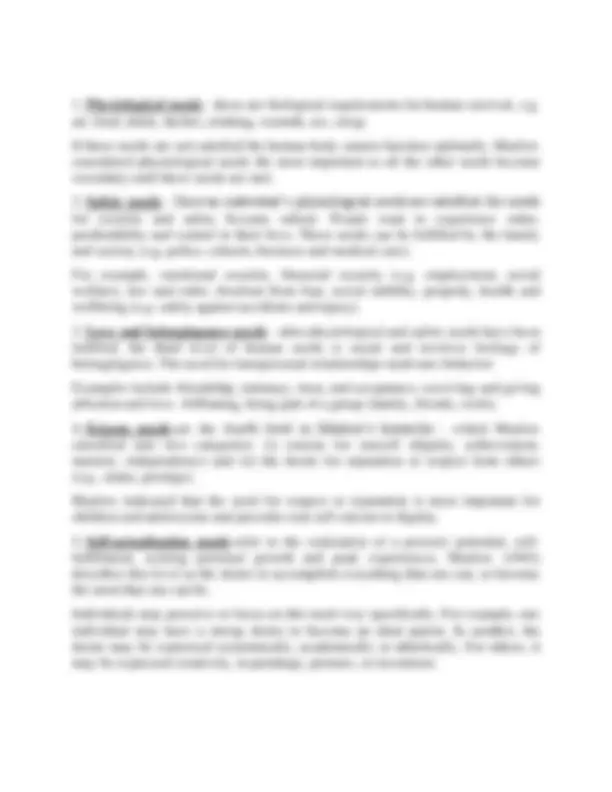




Study with the several resources on Docsity

Earn points by helping other students or get them with a premium plan


Prepare for your exams
Study with the several resources on Docsity

Earn points to download
Earn points by helping other students or get them with a premium plan
Community
Ask the community for help and clear up your study doubts
Discover the best universities in your country according to Docsity users
Free resources
Download our free guides on studying techniques, anxiety management strategies, and thesis advice from Docsity tutors
Phenomenological perspective of personality in explain the five stages like self actualization, esteem, love and belonging, safety needs and physociological needs.
Typology: Lecture notes
1 / 4

This page cannot be seen from the preview
Don't miss anything!



Disclaimer: This content is solely for the purpose of e-learning by students and any commercial use is not permitted. The author does not claim originality of the content and it is based on the following references
Objective: The Phenomenological Perspective is broad perspective including many theories. Maslow advocates a strong base for this perspective. Its daily life applicability is beyond discussion. Learning outcome: To bring out the best out of a person is an idea reinstated in Maslow’s theory Concept of Self Actualization is a phenomena welcomed globally. Hierarchy of needs five-stage model includes: Maslow (1943, 1954) stated that people are motivated to achieve certain needs and that some needs take precedence over others in his 1943 paper A Theory of Human Motivation. He proposed that human needs can be organized into a hierarchy. Our most basic need is for physical survival, and this will be the first thing that motivates our behavior. Further he states that if these needs are not satisfied the human body cannot function optimally. Once that level is fulfilled the next level up is what motivates us, and so on.
Summary; To understand Psychology one needs to grasp the concepts of Phenomenological perspectives. They provide a base for personality growth, therapeutic inputs further concept finds place in all walks of life holding a cross cultural verification and leading to research applications. References: Bernestein, D. A., Roy, E. J., Snull, T. K., Wicknes, D. C. (1991). Psychology. Houghton Mifflin Co. Hilgard, E. R. and Atkinson, R. (1976). Introduction to Psychology. Harcourt Bracor and World Inc. Lefton, L.A. (1985). Psychology. Boston: Allyn &Bacon. Morgan, C.T. (1961). An Introduction to Psychology. New Delhi: Tata McGraw and Hill. McGeehan. (1990), Experimental Psychology (Indian edition). Prentice Hall of India Pvt. Ltd. Singh, A.K. (2000). Uchchtar Samanya Manovigyan New Delhi: Motilal Banaras Snodgrass, J. A., Berger, G. L. and Maydon, M. (1985) Human Experimental Psychology, Oxford University Press. Spear, P.D, Peniod, S.O. & Bakes.T.B.(1998).Psychology Perspective son Behavior. John Wiley and Sons. 11. Zimbardo, P. G. & Weber, A.L. (1997). Psychology. New York: Harper Collins College Publisher